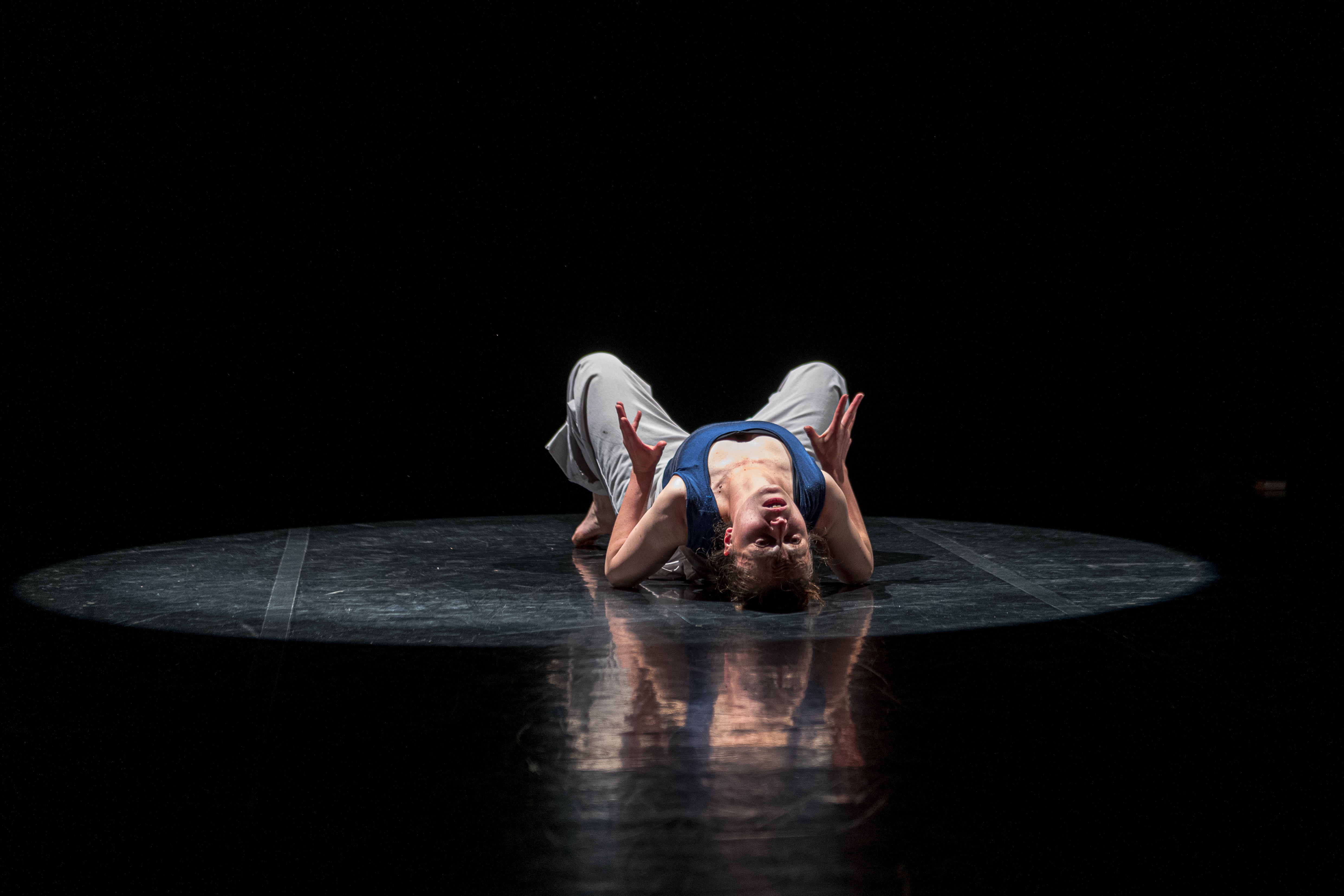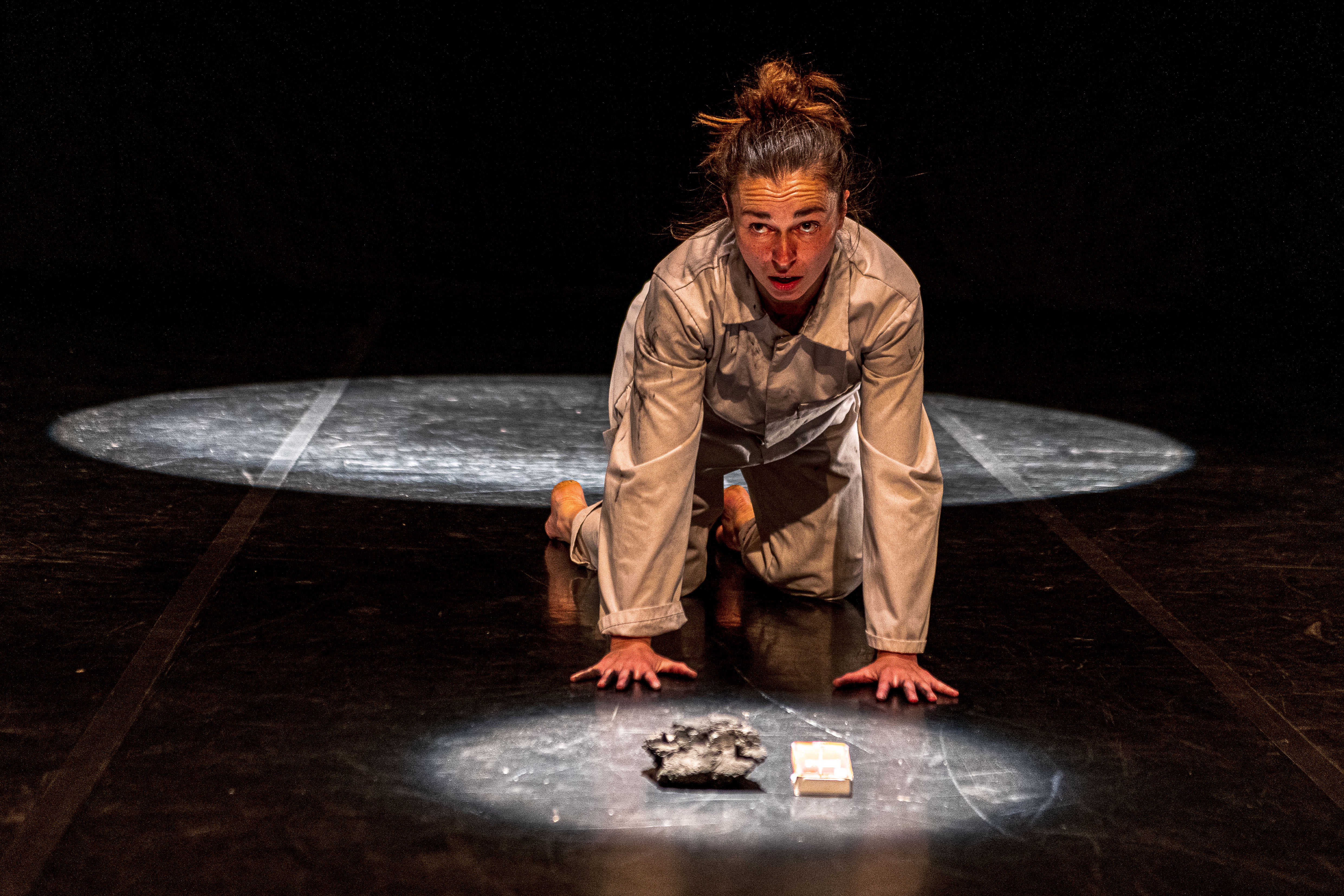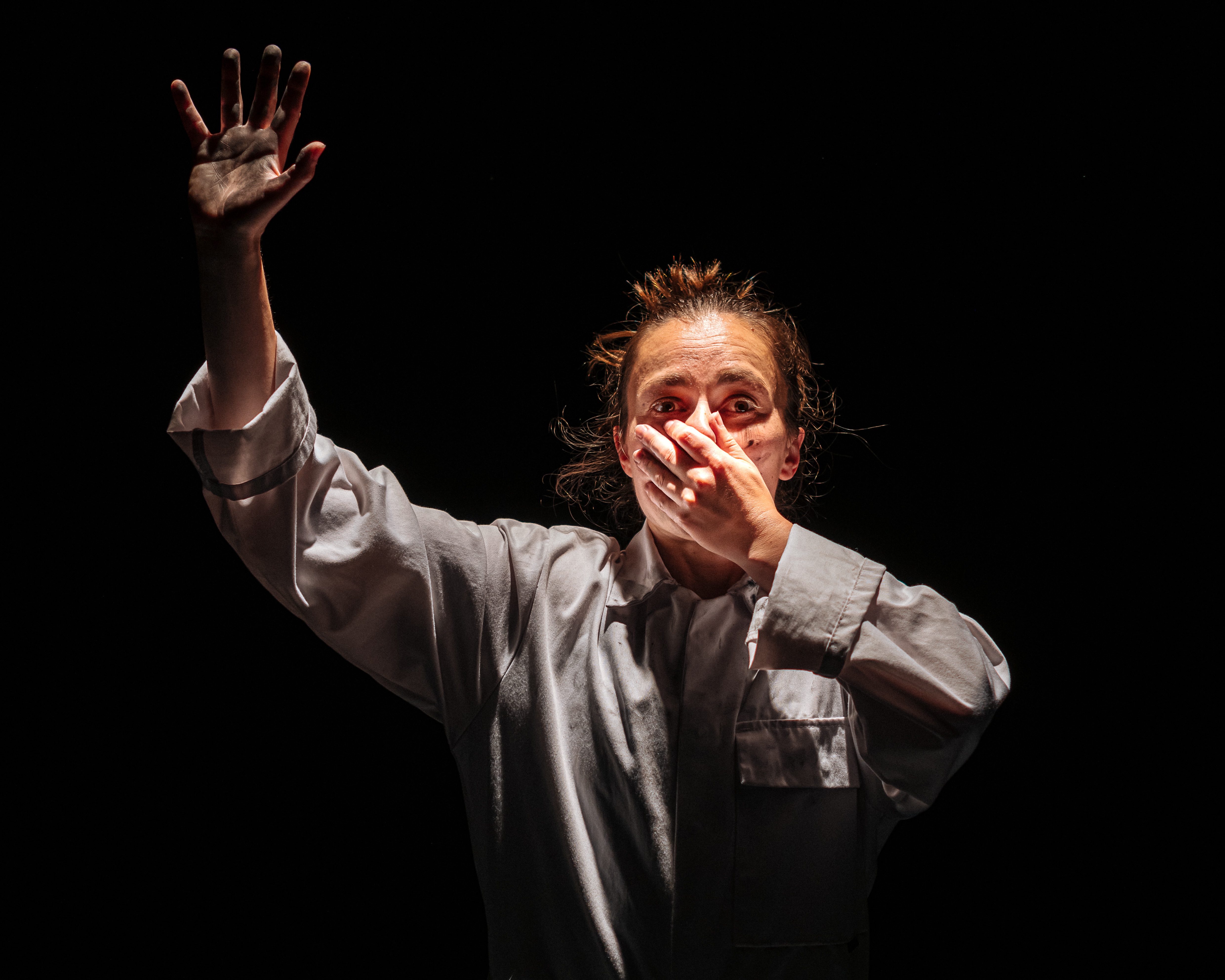Words by Katie Hagan.
Australian born, Scotland-based dance artist Penny Chivas started working on her arresting work Burnt Out in January 2020, at a time when the Black Summer bushfires were tearing through Australia, destroying more than 24 million hectares of land. Burnt Out, premiering last year at the Edinburgh Fringe, intertwines spoken word and movement, to make a startling tapestry about the damaging effects of climate change on our environment.
Received well by audiences last year when it toured to a host of venues, Burnt Out returns to Fringe with performances at Dance Base this month. “Originally I made the work after witnessing the horrendous bushfires and I wanted to just do something to help,” Penny begins. “At that point, it felt very natural to make a work about something that impacted me, my family and so many others; especially one that isn’t just about the fires in Australia but the effects of climate change globally.”
A big presence on the Glasgow dance scene, Penny is just about to graduate from the Master of Education and Learning in the Performing Arts programme at the Royal Conservatoire of Scotland. Over the course of her career Penny has worked on a variety of projects, including work by Ian Spink, Plan B, Scottish Opera, Christine Devaney, Lyra Theatre, Rosina Bonsu, Caroline Bowditch (Paragon Music Ensemble, Vanessa Grasse – Mesh and Stillmotion involving British and international touring.
She started dancing at a young age, taking ballet class at a local school in Ngunnawal country (Canberra) before joining Quantum Leap’s youth company QL2 where she learnt how to engage with dance both physically and intellectually. Penny then studied at Western Australian Academy of Performing Arts (WAAPA) and the Victorian College of the Arts before heading to Toronto where she was introduced to Butoh and contact improvisation. One of her main sources of inspiration there was artist Heidi Strauss, artistic director of adelheid, a Canadian company exploring how performance is about what is understood and what is felt, about both meaning and the human potential to experience.

When Penny began making Burnt Out, she tells me she wanted to make a clear statement about climate change — which would, given the subject matter and our current context, inevitably end up political. “I wanted to take it to the highest platform and raise awareness. Initially I did have concerns from some programmers to make work about climate change as some organisations receive money from certain companies. It makes you think what other political work isn’t being made because of these concerns.”
“Dance has always been political…”
Programmers’ hesitance to platform work due to these conflicts of interest is bizarre considering dance work is becoming increasingly political. “Dance always has been political, the moving body in our society is not particularly valued, but work that seeks to be overtly political is more and more common. It is also political in both the way it is made; in terms of practices such as expressly noting the care for the creators in the work, making inclusive dance work, or embedding more sustainable practices in the design, but also in the content and theme of the work. It makes me wonder, in our current climate in the UK particularly, if as artists we are enacting the change we’d like to see in the wider picture within our own works. When change is hard to enact on a wider scale, what can we do in a small and considered way to have a rippling impact outwards? How can individual behaviour changed be supported in a collective setting?”
Art can reflect and make change, and in a performance space, there really is an opportunity to support and inspire audiences. Is this, then, a form of activism? “I think it’s important to distinguish art from activism. When I showed Burnt Out at COP 26, people did speak to me about the work and said it didn’t speak enough. Maybe they had different expectations of the work, as for me I want to sit between art and activism. It’s about thinking what art can do in this situation that being an activist and taking to the streets couldn’t.”
Speaking to Penny about the work more closely, it is clear she is doing just that. “Although the work started as a lamentation on the wildfires, the work touches on many aspects including coal. I wanted to have Acknowledgement of Country and wanted to start the work to face the reality that coal was taken from indigenous lands. Whilst I can’t speak on behalf of an indigenous person, I do believe I have a responsibility as a white Australian to do something.”
“The situation with coal in Australia is very complicated right now,” Penny continues. “Unfortunately, the Adani mine in Australia is going to be built which is a huge shame. It’s being built on the lands of the Wangan and Jagalingou people and the land rights were totally overrides for this to happen. It’s even more problematic that Adani is a major sponsor of the Science Museum!” Last month the museum hit headlines as hundreds of teachers pledged not to take their students to a new exhibition until it cancels its sponsorship deal with a company linked to the coalminer.

Taking a closer look at Burnt Out, how does the piece journey? What is the movement like?
“The movement is quite emotionally charged; there’s lots of layering with the text as well as Paul Michael Henry’s sound. The music feeds into this feeling of lament and encompasses different textures including the sound of magpies imitating fire sounds, a sound they produce as they hear it so much!”
“I wanted to make sure there was a sense of detail in what was going on. Detail in terms of the props I use and David Bowes’ lighting and how that is used spatially; so, thinking of the lights as sculpting me rather than lighting my body as a dancer. I worked with David very closely and liked how he sees lighting as an element of a performance and not an afterthought. Lighting provides a sense of discord, of something being there without showing itself, ominous. I wanted to hold space for fear, stress, panic and open up a pathway into new ways to think about this situation. Every detail had to feed into this.”
“Hopefully this lets Burnt Out reach and speak to people in an artistic way,” Penny says. “Hopefully it lets them feel something.”
Burnt Out will be shown at Dance Base as part of Edinburgh Fringe from 23-28 August. Book your tickets here.
